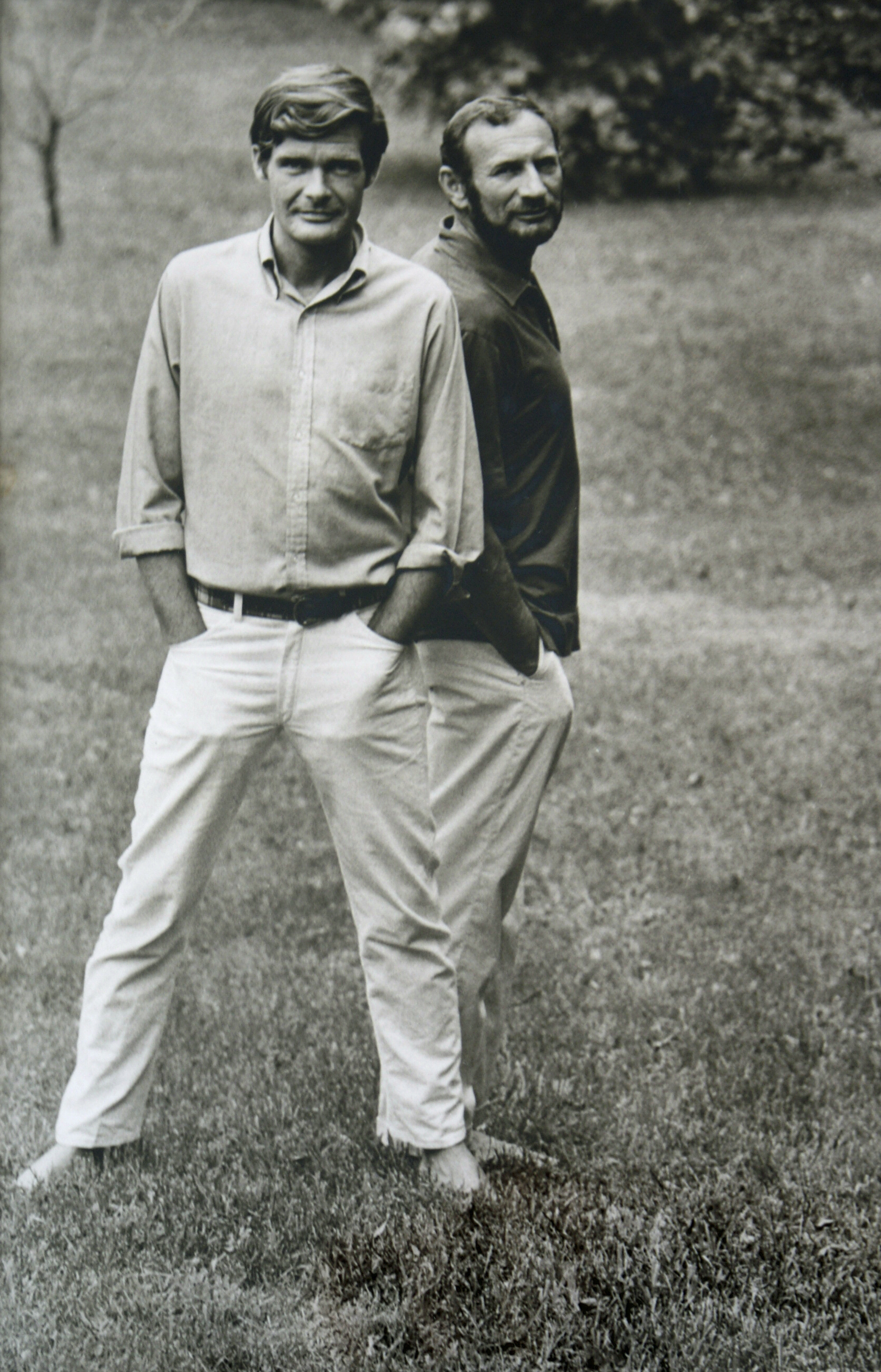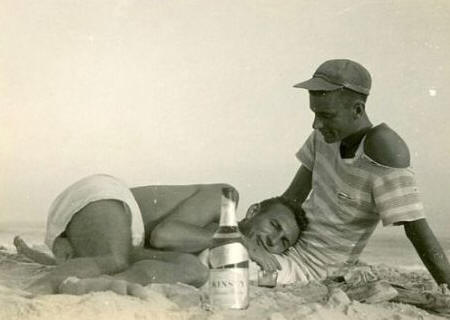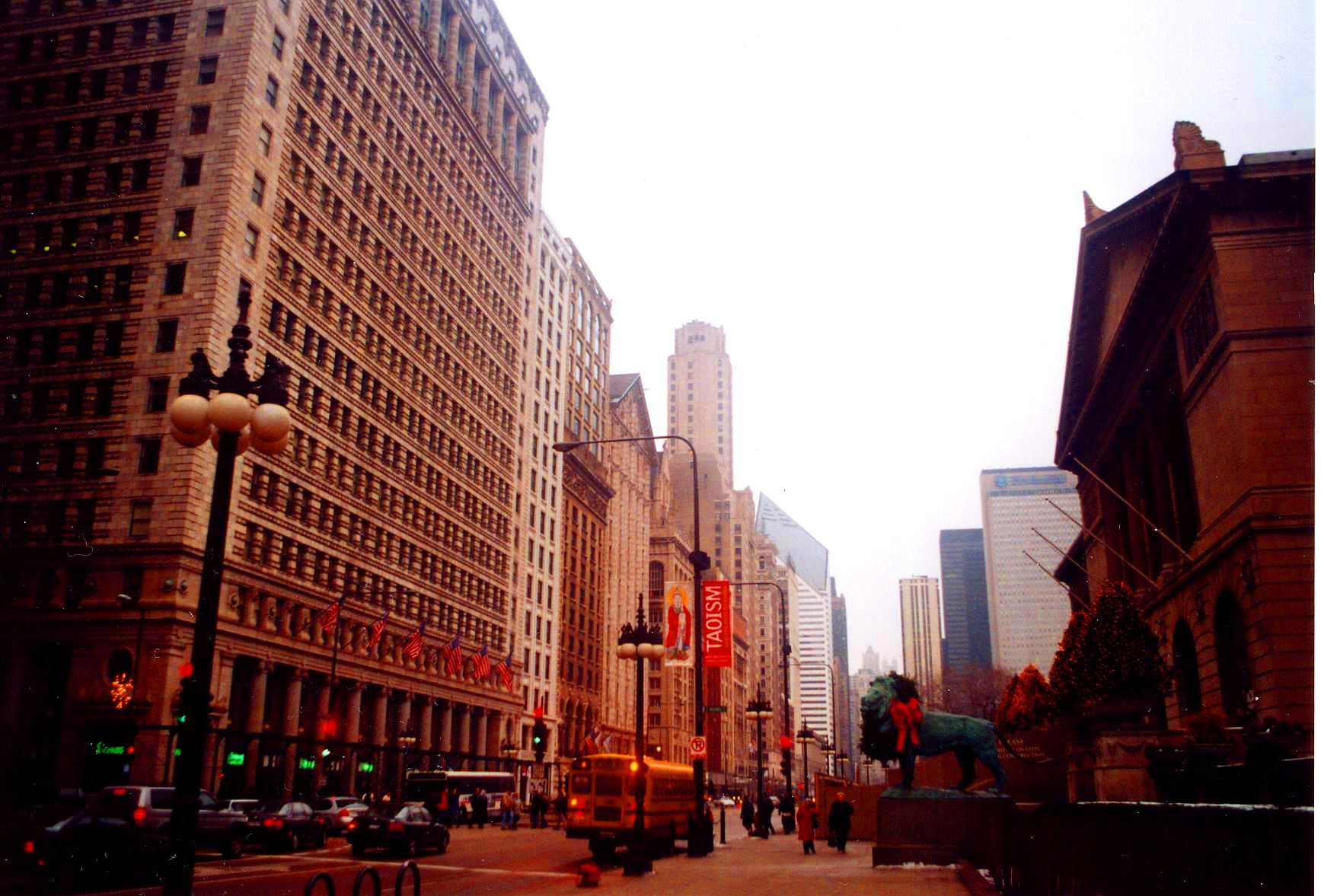 Bernard
Perlin was an American painter. He is primarily known for creating pro-war art
during World War II and magic realism paintings of urban American life.
Bernard
Perlin was an American painter. He is primarily known for creating pro-war art
during World War II and magic realism paintings of urban American life. Partner Wilbur Pippin, Husband Edward Newell
Queer Places:
National Academy Museum and School, 1083 5th Ave, New York, NY 10128
The Art Students League of New York, 215 W 57th St, New York, NY 10019
56 Shadow Lake Rd, Ridgefield, CT 06877
 Bernard
Perlin was an American painter. He is primarily known for creating pro-war art
during World War II and magic realism paintings of urban American life.
Bernard
Perlin was an American painter. He is primarily known for creating pro-war art
during World War II and magic realism paintings of urban American life.
Perlin was born in Richmond, Virginia in 1918 to Davis and Anna Schireff Perlin. His parents were Jewish immigrants from Russia, and his father died when Perlin was 10 years old.[1] Perlin grew up with two older sisters, Mildred and Jeanette. At the encouragement of a high school teacher, he was enrolled in the New York School of Design.[2] He studied there from 1934 to 1936, the National Academy of Design with Leon Kroll in 1937, and then the Arts Student League with Isabel Bishop, William Palmer, and Harry Sternberg until 1940.[3][4] In 1938, he was awarded the Kosciusko Foundation Award to study in Poland.[5]
Perlin entered the Graphics Department of the Office of War Information in 1942, creating pro-war propaganda popular in the United States. The OWI was shut down in 1943 due to budgetary issues.[6]
He continued his focus on war as an artist-correspondent for Life Magazine from 1943–1944 and then again for Fortune Magazine in 1945.[5] As an artist-correspondent for Life, he brought back to the U.S. the first news and sketches obtained in Greece since the German occupation began in 1941.[7]
His two most notable wartime pieces, both created in 1943, are arguably his "Let Em Have It" war bonds ad, which depicts a soldier throwing a grenade, and "Americans Will Always Fight for Liberty," a painting of World War II soldiers marching in front of Continental Army soldiers.[8][9][10]
In 1939, he painted a country scene on a post office wall for the US Treasury. After the war, his work began to focus on magic realism, aiming to capture special moments in everyday life. He produced his most famous work, Orthodox Boys, in 1948. The painting depicts two Jewish boys standing in front of a subway graffiti backdrop.[8]

BERNARD PERLIN (1918-2014)
Shepherd Boy (Aldo Brancacci).
Silverpoint on heavy wove paper. 400x300 mm; 15 3/4x12 inches. Signed and dated in pencil, lower left recto. 1953.
Provenance: Sotheby's, New York, The Andy Warhol Collection, April 24-26, 1988, lot 1005, with the label on the frame back; Michaan's Auctions, October, 4, 2009, lot 533; The Modern Art Exchange, Oakland, March 15, 2014, lot 1050; private collection, New York.
Published Michael Schreiber, One-Man Show: The Life and Art of Bernard Perlin, Bruno Gmünder, Berlin, 2016, page 168.
![Fred Melton [Profiles] • Instagram, Twitter, TikTok | Foller](../images/images%20009/10744426515_3bc1a2ab07_b.jpg)
Bernard Perlin by Fred Melton and Wilbur Pippin (1954)

Wilbur Pippin and Bernard Perlin
Museum of Modern Art

Art Institute of Chicago
Perlin moved to Italy for six years, and his work became more brightly colored.[2] After moving back to New York City, Perlin grew distasteful towards the competitive culture of the city's art scene. He moved to Ridgefield, Connecticut, and continued to paint until the 1970s.[8] After several years of retirement, a friend encouraged Mr. Perlin back to the canvas in 2012, and after completing two new pieces the Chair and the Maiden Gallery (New York City) hosted a retrospective of Mr. Perlin's work in 2013.
In 1968, Bernard Perlin commemorated Mayor Richard J. Daley and the 1968 Democratic National Convention, which was held in Chicago, in a work entitled Mayor Daley. This example of Perlin's work has been used by educators to teach about the Vietnam War. The painting is currently at the Columbus Museum of Art.[11]
Perlin was in a relationship with Wilbur Pippin. He was married to Edward Newell. Ed Newell was a top fashion model in the 1950s and 60s. He and Perlin first met at George Platt Lynes' New Year's Eve party in 1954. They began a relationship the following summer which has lasted 57 years. When he stopped painting, Perlin took up growing flowers.[8]
Perlin died at the age of 95 in 2014 in his home in Ridgefield.[2]
He received Guggenheim Fellowships in 1954 and 1959.[12]
Examples of his work are in a number of museums and libraries, including the Smithsonian Institution, the Museum of Modern Art, the Whitney Museum of American Art, the Art Institute of Chicago, and the Pritzker Military Museum & Library.
My published books: